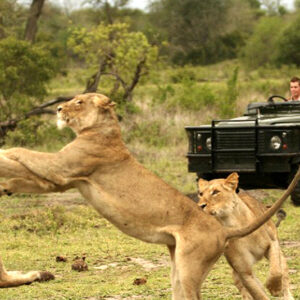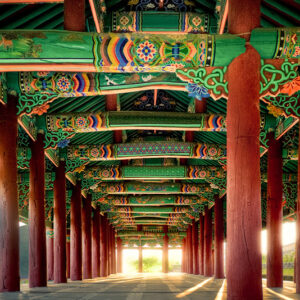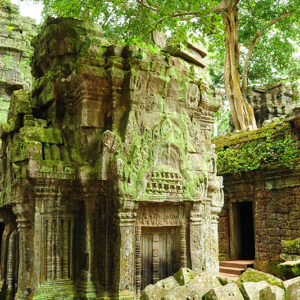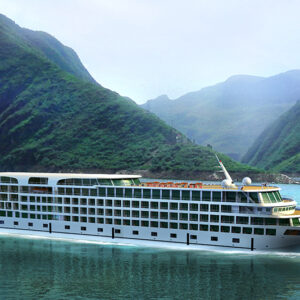Description
Day 1 Arrival in Yangon
Arrive at Yangon, you are met by an English speaking representative and transferred to the hotel.
Accommodation: Sule Shangri-La Hotel or similar
Day 2 Yangon (B/L)
Have a restful morning before you start Sightseeing in Yangon.
Yangon lies in the fertile delta of southern Myanmar, on the wide Yangon River. The city is filled with tree-shaded boulevards, while shimmering stupas float above the treetops. The city became the capital only in 1885, when the British completed the conquest of Upper Myanmar and Mandalay’s brief period as capital of the last Burmese kingdom ended.
Visit Chaukhtatgyi Pagoda
The reclining Buddha at Chaukhtatgyi Pagoda in Yangon which is almost as large as the enormous figure of Shwethalyaung Buddha in Bago. It’s housed in a large metal-roofed shed on Shwegondaing Lan, only a short distance north-east beyond the Shwedagon Paya. Surprisingly, this huge figure is little known and hardly publicised at all- if the chance to go to Bago to see the Shwethalyaung was missed, then don’t pass on this opportunity to witness this colossal image.
Visit Botataung Pagoda
The Botataung Pagoda was named after the 1000 military leaders who escorted relics of the Buddha brought from India over 2000 years ago. This ancient monument was completely destroyed during WWII. It was then rebuilt in a very similar style to its predecessor, however this particular iteration is hollow and one can walk through it.
Visit Shwedagon Pagoda at sunset
The highlight of any trip to Yangon is a visit to the spectacular Shwedagon Pagoda, which dates back about 2500 years and was built to house eight sacred hairs of the Buddha. Its bell-shaped superstructure, resting on a terraced base, is covered in about 60 tonnes of gold-leaf, which is constantly being replaced.
Overnight in Yangon.
Day 3 Yangon – Heho – Inle Lake (B)
Flight from Yangon to Heho. By vehicle from Heho to Inle Lake.
Excursion by canoe through the canals to visit various villages on the lake. Nestled among the Shan Mountains are the glassy blue waters of Inle Lake. The lake has a magical atmosphere, making visitors feel calm and relaxed. Take a boat trip along the lake to see local life with an opportunity to see the way that fisherman row their boats while standing on one leg. Enjoy visiting various villages on the lake.
Accommodation: Pristine Lotus Spa Resort Inle or similar
Day 4 Inle Lake (B)
Excursion by boat on Inle Lake to Indein and Sae Ma Village
Travel by boat to the western shore of the lake to a stairway and walk to the hidden Indein temple complex. Located on the shore of the lake, this site consists of hundreds of small stupas overgrown by moss and greens. Continue on foot past rice fields to the village of Sae Ma, stopping to explore the village and the local school. In the afternoon meet the village locals on the lake and travel to one of the monasteries to observe the monastic activities
Visit the Phaung Daw Oo Pagoda
Overnight in Inle Lake
Day 5 Inle Lake – Kalaw (B)
By vehicle from Inle Lake to Shwe Nyaung, continuing by train to Kalaw.
Sightseeing in Kalaw with a light trek to nearby villages
A popular hill station in the British days, Kalaw sits high on the western edge of the Shan Plateau. It is still a peaceful and quiet place with an atmosphere reminiscent of the colonial era. The small population is a mix of Shan, Indian Muslim, Bamar and Nepali. Visit Kalaw’s most interesting attractions including: Thein Taung Paya, a temple perched on the hill overlooking the Thazi-Taunggyi Road; Aung Chang Tha Zedi, a glittering stupa covered in gold-coloured mosaics; Dhamma Yon: a two-storey temple which from its top floor offers views of the town; Hsu Taung Pye Paya, ruins and crumbling stupas just behind the Dhamma Yon; Nee Paya, located just west of town and featuring a gold lacquered bamboo Buddha. And moving to the more modern, visit Christ The King Church, a Catholic church under the supervision of the Burmese Father Paul, and the Italian Father Angelo Di Meo, who have been in Myanmar since 1931. The Christ figure over the altar came from Italy, and Father Angelo painted the mural background.
Enjoy trekking in the plateau near Kalaw, which is inhabited by people of the Palaung and Pao tribes. Intha, Shan, Taungthu, Taung-yo, Danu. Kayah, Danaw and Bamar tribes occupy the mountains to the north and east. One of the main sources of income is the cultivation of ‘thanaq-hpeq’ (a large leaf used to wrap Burmese cigars).
Accommodation: Pine Hill Resort or similar
Day 6 Kalaw – Heho – Mandalay (B)
By vehicle from Kalaw to Heho with sightseeing at Pindaya.
Pindaya Caves are ensconced in a limestone ridge overlooking the lake. Inside the cavern there are more than 8,000 Buddha images made from alabaster, teak, marble, brick, lacquer and cement, and they are arranged in such a way as to form a labyrinth throughout the various cave chambers.
Flight from Heho to Mandalay and transfer to your hotel.
Accommodation: Mandalay Hill Resort or similar
Day 7 Mandalay (B)
Sightseeing in Mandalay
The last capital of royal Burma, Mandalay is still one of the largest cities in Myanmar, and a cultural and spiritual centre. Neighboring Sagaing is home to over sixty per cent of the country’s monks, while the artisans of Mandalay continue to turn out the finest crafts in Myanmar. In the morning, head to Mahamuni Paya. The Mahamuni image enshrined here is perhaps the most venerated image in Myanmar, covered in over 15 cm of gold leaf. Worshippers flock daily to the shrine at four in the morning to observe the unique face-washing ceremony. En route to the pagoda, stop to observe the laborious process of Gold-Leaf Beating, where gold is painstakingly hammered into tissuethin squares. Before breaking for lunch, visit a Craft Workshop specializing in one of the arts for which the city is famous: bronze-casting, marble-carving, wood-carving, or puppetry.
The afternoon’s tour includes some of the city’s most interesting temples and palaces. Begin at Shwenandaw Kyaung, or the Golden Teak Monastery. Built entirely of golden teak, this intricately carved wooden monastery was once part of the Mandalay Palace, used as private apartments by King Mindon and his chief queen. Continue to Kyauktawgyi Paya, famous for its monumental seated Buddha, carved from a single block of marble.
Continue to Kuthodaw Paya, known also as “the world’s biggest book”. Around the central stupa are miniature pavilions, each housing a slab of marble Numbering altogether 729, these slabs are inscribed with the entire Tripitkata, or Buddhist scriptures.
The final stop is at Shwe Kyin Old Monastery, an old monastery at the base of Mandalay Hill which was built during the period of King Mindon.
Visit Mandalay Hill at sunset
Visit Mandalay Hill and take an easy climb up sheltered steps to experience panoramic views over the palace, Mandalay and the paya-studded countryside. The famous hermit monk, U Khanti, is credited with inspiring the construction of many of the buildings on and around the hill in the years after the founding of the city.
Overnight in Mandalay.
Day 8 Mandalay – Monywa (B)
By vehicle from Mandalay to Monywa
Excursion to the Pow Win Daung Caves by jeep
Cross the Chindwin River by local ferry and continue westwards towards the Pow Win Daung caves by open jeep. Pow Win Daung Mountainis home to a series of caves nestled in the hillside along a path and contain Buddha images and well-preserved murals that date from the 14th-16th centuries. Visit Shwe Ba Taung Paya, with shrines carved into the hillside decorated with elaborate mosaics and Buddha images. Sculptures line the path and walls, including a giant frog perched by the road and an elephant carved to form a temple doorway.
Accommodation: Win Unity Resort Hotel or similar
Day 9 Monywa – Pakkoku – Bagan (B)
Sightseeing in Monywa
Situated on the eastern bank of the Chindwin River, Monywa is now the second biggest town in Upper Myanmar and serves as a major trade centre for agricultural produce from the surrounding Chindwin Valley, especially beans, pulses and palm sugar. Visit the Thanboddhay Paya, where every spare surface, inside and out, is covered with thousands of miniature Buddha images (almost 600,000 altogether); the cumulative effect is spectacularly colourful. Discover one of the most important pilgrimage sites in Myanmar, the Shwe Gu Ni Paya, ts importance due to its main zedi, which reportedly has the ability to grant wishes. See the magnificent Reclining Buddha, perched atop a hill, with spectacular views across the plain. This giant reclining Buddha is one of the largest in the country. Marvel at Boddhi Tataung, a grove of banyan tree with a 1000 Buddha images resting at the foot of the trees.
By vehicle from Monywa to Pakkoku
Travel from Monywa to Pakkoku with a stop at Ma-U village. Take a short walk and visit a family workshop to see how incense sticks are made.
Sightseeing in Pakkoku
Explore the bustling town of Pakokku, with a visit (perhaps by trishaw) to the local market and a stop to the cheroot factory, where visitors can observe the manufacture of this typical kind of mild Burmese cigar.
By boat from Pakkoku to Bagan and transfer to your hotel.
Accommodation: Aye Yar River View Resort or similar
Day 10 Bagan (B)
Sightseeing in Bagan
Bagan is a spectacular plain stretching away from the Ayeyarwaddy River, dotted with thousands of 800-year old temple ruins. Although human habitation at Bagan dates back almost to the beginning of the Christian era, Bagan only entered its golden period with the conquest of Thaton in 1057 AD.
SHWEZIGON PAYA: King Anawrahta started the construction of the Schwezigon Pagoda to enshrine some relicts of Buddha. The construction was finished by his successor, King Kyansittha between 1086 and 1090. Originally the Shwezigon Pagoda marked the northern end of the city of Bagan. The stupa’s graceful bell shape became a prototype for virtually all later stupas over Myanmar.
GUBYAUKHYI TEMPLE at Wetkyi-Inn: This Temple was built in the early 13th Century and repaired in 1468. The great colourful painting about the previous life of Buddha and the distinguished architecture make this temple an interesting site for a visit. This temple should not be confused with the Gubyaukgyi Temple near Myinkaba village.
ANanDA PAHTO: one of the finest, largest, best preserved and most revered of the Bagan temples. Thought to have been built around 1105 by King Kyanzittha, this perfectly proportioned temple heralds the stylistic end of the Early Bagan period and the beginning of the Middle period.
GUBYAUKGYI TEMPLE at Myinkaba: Built in 1113 by Kyanzittha son Rajakumar, this temple is famous for its well-preserved Stuccos from the 12th century on the outside walls. The magnificent paintings date from the original construction of the temple and are considered to be the oldest original paintings in Bagan.
MANUHA TEMPLE: The Manuha Temple was built in 1059 by King Manuha, the King of Thaton, who was brought captive to Bagan by King Anawrahta. It enshrines the unusual combination of 3 seated and one reclining image Buddha. It is said that this temple was built by Manuha to express his displeasure about his captivity in Bagan.
SHWESANDAW PAYA: In 1057 King Anawrahta built this Pagoda following his conquest of Thaton. This is the first monument in Bagan, which features stairways leading up from the square bottom terraces to the round base of the Stupa.
LACQUERWARE WORKSHOP: the villages around Bagan are known for producing the finest lacquerware in Myanmar. Stop by one of the workshops and learn about the painstaking process of laquerware making and decoration.
Watch sunset over Bagan
Enjoy a panoramic view of the sun setting over the plain of Bagan from one of the pagoda platforms.
Overnight in Bagan.
Day 11 Bagan – Yangon – Home (B)
Flight from Bagan to Yangon
Upon arrival, enjoy a tour.
Hop onto Yangon’s circular train and discover some of the city’s best kept secrets – a shattered glass factory and a serene leafy oasis. From the colonial-style Yangon Railway Station, buy a circular train ticket to Hledan Station. As the train rumbles along the bumpy track look out onto the passing landscape and enjoy the commotion at each station as the food hawkers hop on and off. On arrival in Hledan, walk to the bustling local market to see the array of fresh vegetables, flowers and other produce on sale. From here travel by vehicle to the surreal ruins of the Nagar Glass Factory, torn to shreds by the Nargis Cyclone in 2008.A winding overgrown path leads you through the trees to the remains of this forgotten glass factory. Scattered all over the ground are piles of glittering clear and coloured bottles, bowls, glasses and statues – some broken, some still intact. More can be found on the shelves and in the old cupboards in the remnants of the factory. Pick up what you like and hand it to the old Burmese lady who will recondition the glassware for you, before you buy it to take home. As the factory is no longer operational, you can be secure in the knowledge that you have purchased a one-of-a-kind souvenir, to be found nowhere else in the world. Next visit Sein Lann So Pyay Garden, hidden between Inya Lake and Inya Road. Quiet, calm and serene, this garden restaurant has wide patches of green fields. Gaze upon the beauty of the lake and garden as you enjoy lunch at the restaurant.
Visit Sule Pagoda
Sule Pagoda is a 48-meter high golden dome used by the British as the nucleus of their grid development plan for the city when it was rebuilt in the 1880s. The pagoda’s peculiarity is its octagonal-shaped stupa, which retains its shape as it tapers to the spire.
Visit Bogyoke Aung San (Scott) Market (Closed on Mondays and public holidays)
Explore the Bogyoke Aung San Market, aka Scott Market, which contains over 2000 stalls and is the best place in Yangon to browse through the complete range of local handicrafts.
Transfer to the airport for your flight home.
Based on Double
- Twin Sharing: USD $3315
- Single supplement: USD $1397











Reviews
There are no reviews yet.